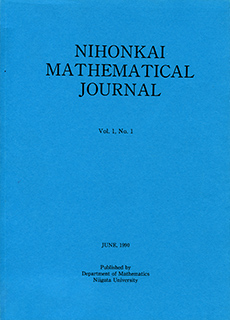Abstract
Let $I$ be an index set, not necessarily a subset of any Banach algebra. Let $\mathcal{A}$ and $\mathcal{B}$ be unital semisimple commutative Banach algebras with maximal ideal spaces $M_{\mathcal{A}}$ and $M_{\mathcal{B}}$, respectively. If surjective mappings $S_1, S_2 \colon I \to \mathcal{A}$ and $T_1, T_2 \colon I \to \mathcal{B}$ satisfy $\mathrm{r}(T_1(\lambda) - T_2(\mu)) = \mathrm{r}(S_1(\lambda) - S_2(\mu))$ for all $\lambda, \mu \in I$, where $\mathrm{r}(a)$ is the spectral radius of $a$, then there exist $p, w \in \mathcal{B}$, a homeomorphism $\varphi \colon M_\mathcal{B} \to M_\mathcal{A}$ and a closed and open subset $K$ of $M_\mathcal{B}$ such that $|\hat{w}| = 1$ on $M_\mathcal{B}$ and that
$$ \widehat{T_k(\lambda)}(y) - \hat{p}(y) = \begin{cases} \hat{w}(y)\widehat{S_k(\lambda)}(\varphi(y)) & y \in K \\[2pt] \hat{w}(y)\overline{\widehat{S_k(\lambda)}(\varphi(y))} & y \in M_\mathcal{B} \setminus K \end{cases} $$
for all $\lambda \in I$ $(k = 1, 2)$. In particular, if $\mathcal{A}$ and $\mathcal{B}$ are uniform algebras, and if $S_1, S_2 \colon I \to \mathcal{A}$ and $T_1, T_2 \colon I \to \mathcal{B}$ satisfy
$$ \sigma_\pi ({T_1(\lambda) - T_2(\mu)}) \cap \sigma_pi ({S_1(\lambda) - S_2(\mu)} ) \neq \emptyset \qquad (\forall \lambda, \mu \in I), $$
where $\sigma_pi (f)$ is the peripheral spectrum of $f$, then $\widehat{T_k(\lambda)}(y) = \hat{p}(y) + \widehat{S_k(\lambda)}(\varphi(y))$ for all $\lambda \in I$ and $y \in M_\mathcal{B}$ $(k = 1, 2)$.
Citation
Go Hirasawa. Takeshi Miura. Rumi Shindo. "A generalization of the Banach-Stone theorem for commutative Banach algebras." Nihonkai Math. J. 21 (2) 105 - 114, 2010.
Information





